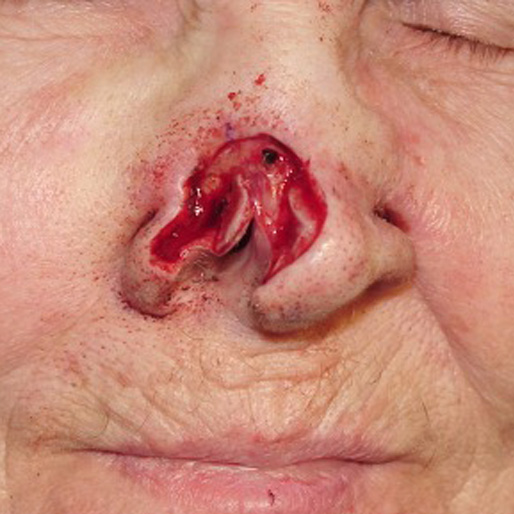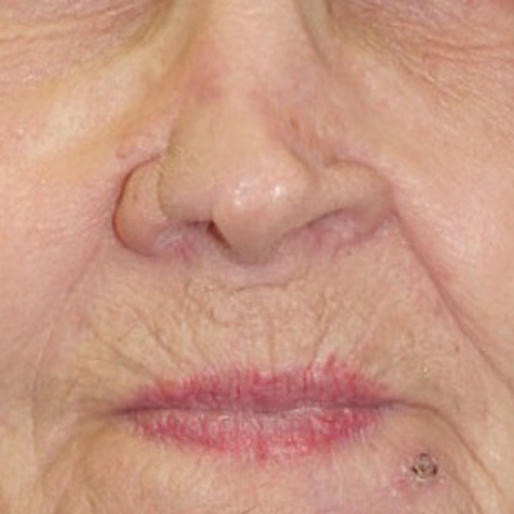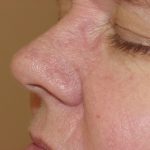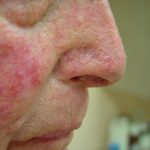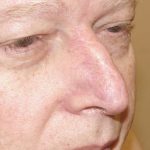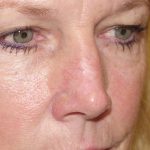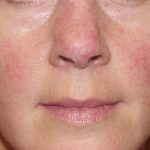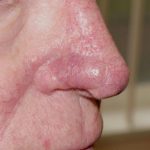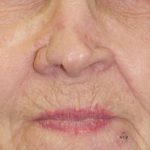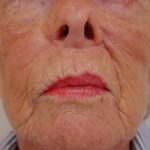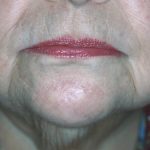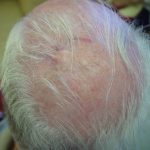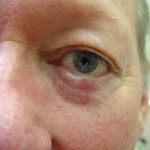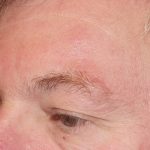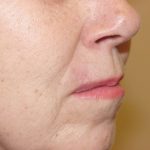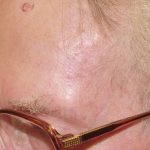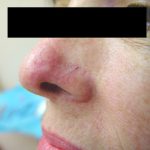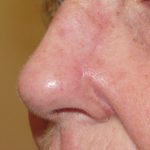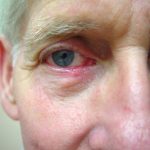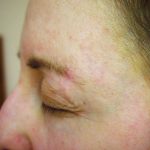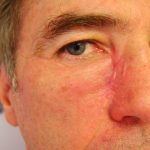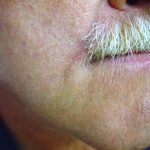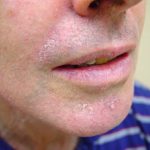This patient was referred to Dr. Morganroth, a nationally-recognized, double board-certified Mohs surgeon and reconstructive surgeon, to manage a recurrent basal cell carcinoma originally treated as a nodular basal cell carcinoma by a board-certified plastic surgeon by excision with frozen sections five years earlier in the operating room of a local hospital. Following clear margins per the hospital pathologist by frozen section examination, the small defect was closed with a local flap (adjacent tissue transfer) with a very good result per the patient. Five years later, an area of the scar would bleed after washing her face. She went to her dermatologist who performed a biopsy that revealed infiltrative basal cell carcinoma. Recurrent tumors allowed to grow for years after excision often have more aggressive histologic appearance and are intermingled with scar tissue. This tumor recurred after frozen tissue excision because the frozen tissue excision was limited since less than 1% of the tissue margins were examined during the hospital-based frozen tissue examination and cancer cells were missed. In contrast to the less than 1% of margin examined by traditional frozen tissue techniques, Mohs surgery examines 100% of the frozen tissue margin and has a much lower risk of missing cancer cells.
Dr. Morganroth performed Mohs surgery on this recurrent, infiltrative basal call carcinoma and obtained negative margins after 5 stages. The cure rate for recurrent basal cell carcinoma is approximately 3-4% lower than tumors treated for the first time, but Mohs still offers the highest cure rate possible. This devastating full thickness defect involved loss of the nasal tip and its cartilage framework and the medial nostril and its underlying supporting tissues. This highly complex defect is typically referred to academic centers or hospitals where facial plastic surgeons and plastic surgeons perform major, multi-hour reconstructive procedures under general anesthesia one day to a week or longer after the Mohs surgery. Dr. Morganroth is one of the handful of Mohs surgeons in California and the United States that repair these complex defects under local anesthesia in less than one hour operative time on the same day as the Mohs surgery.
Under local anesthesia, Dr. Morganroth harvested cartilage from the patients ear to replicate the missing nasal tip cartilage and structural support for the alar (nostril) rim. Once the nasal cartilage skeleton was replicated, a paramedian forehead flap was utilized to cover the nasal tip cartilage and wrap around the alar rim cartilage to recreate the alar (nostril) rim and replace the missing mucosal lining of the nose. Care was utilized to ensure the nostril airway was patent and the nasal rim support would remain intact when the patient slept on her side. The forehead flap pedicle was reduced after three weeks and the proximal and distal ends of the flap were sutured into place. The second surgery sutures were removed in 7 days and the patient returned for follow-up 6 weeks later.
This repair restored a functional and cosmetic result that pleased the patient and her family. Dr. Morganroth offered a secondary procedure to refine the scar including manual dermabrasion, laser, and excision, however the patient was happy with the outcome and declined any scar revision.

